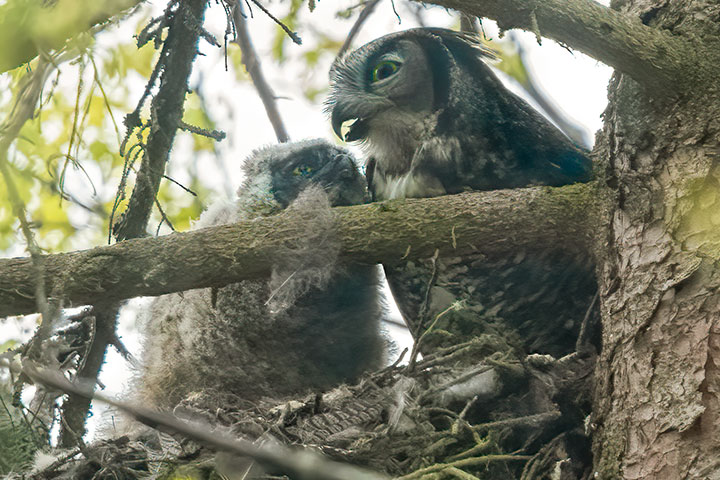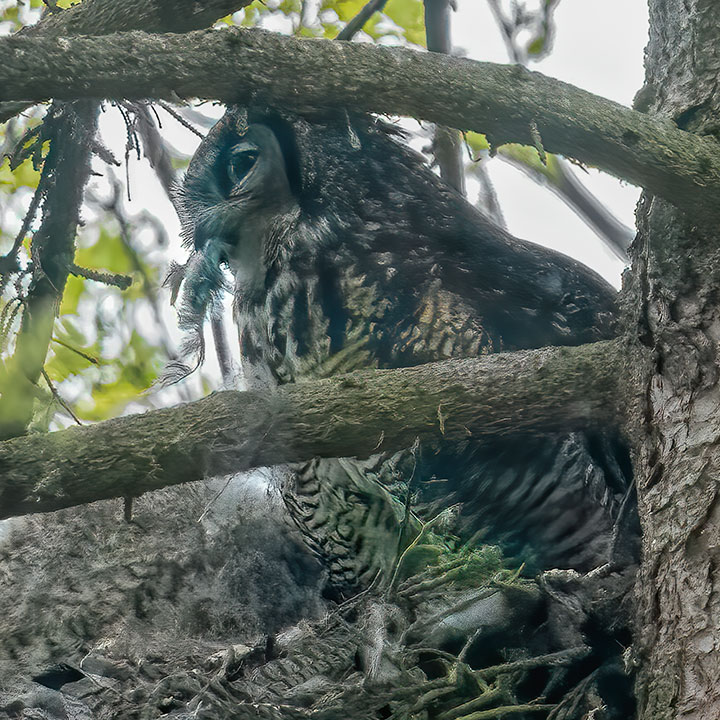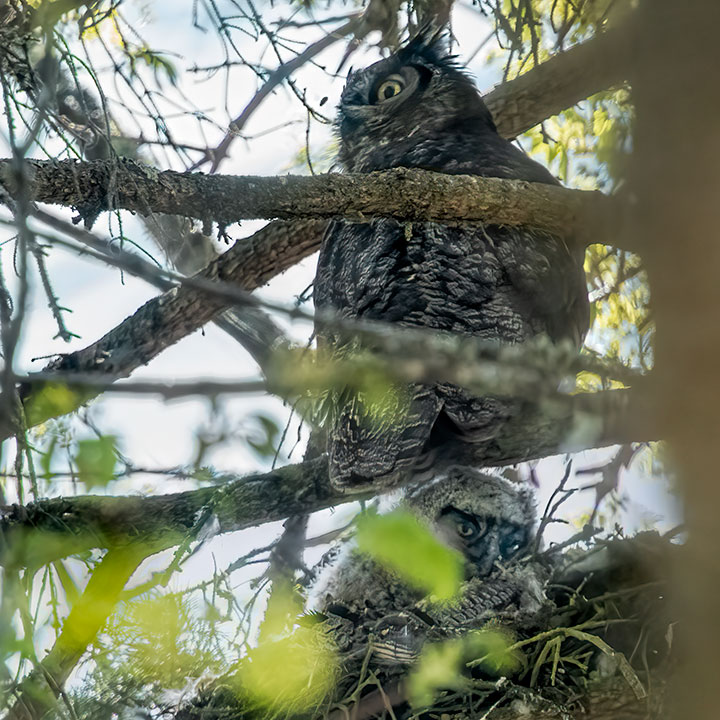The Great Horned Owl is billed as widespread and common throughout North America. But, just try to find one: it has camouflage colouring, it is primarily active at night; it nests unobtrusively high in trees.
My favourite observing location for a Great-Horned nest is, for the moment, interdicted by covid-19. This will pass, but it was nice to have been told of another local nest. Yesterday, I visited it in rain and failing light. And then again this morning.
A Great horned Owl parent prepares to feed its expectant chick.

And offers, what appears to be, the remains of a small bird.

When visited the next morning, the parent was on a branch and the chick was on the nest.


You never cease to amaze me. What you must go through to get these great shots.
Many thanks.
Thank you so much for those great shots . Loved the soft spring green of the leaves .
These are fantastic, thanks Alistair.
I’ve seen only two owls, one in the forest, and one that flies with a raptor society. The latter was absolutely amazing. It flew over my head silently, and it was explained how their wings make flight silent.
Today’s images bring back wonderful memories. Growing up near Peterborough, Ontario, my neighbour for a time, was Kay McKeever, the owl lady. During a visit, she invited me to “pet” a great horned owl that was convalescing in her care. The soft ball of fluff clicked it’s beak and stared at me with big yellow eyes. What a thrill.
Kay and husband Larry moved to Vineland, ON and established the Owl Foundation. Kay died a year ago.